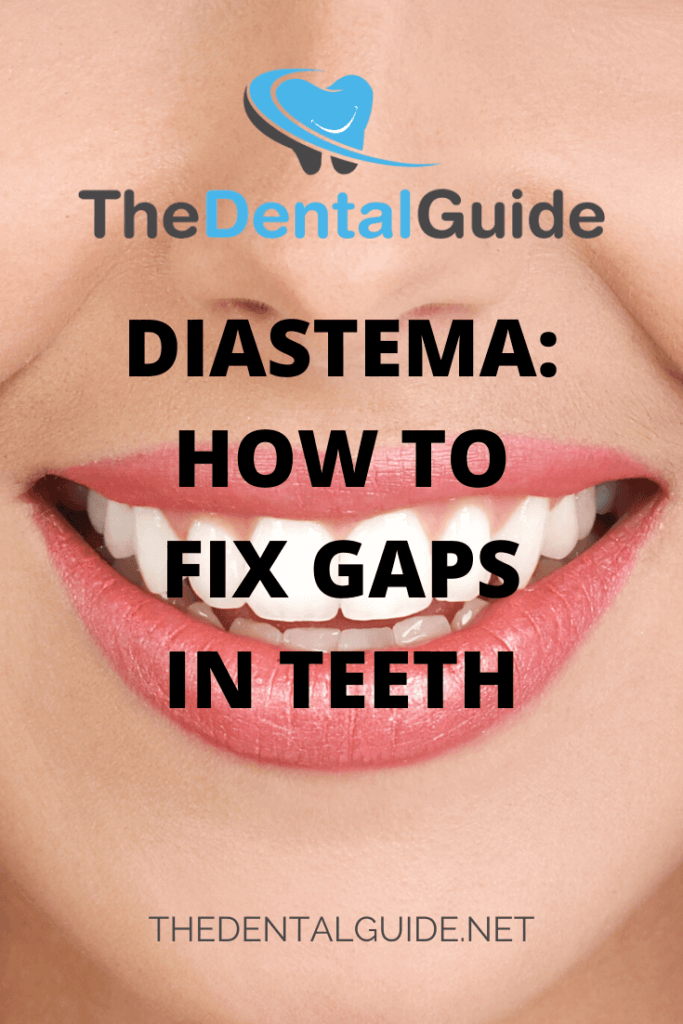Diastema is a space or gap between two or more teeth in the mouth. This condition is most noticeable when it occurs between the two front teeth on the upper jaw.
There are two types of diastema, depending on the location of the gap. Mandibular diastema affects the lower teeth, and median or midline diastema involves the upper teeth.
A gap between front teeth is the most common form of diastema. It can affect anyone in childhood or adulthood, but the spaces can be fixed easily in most cases.
It’s normal for children to develop a gap between their teeth, which is usually no cause for concern. Children can develop spaces as their primary teeth fall out, and the areas often close with the eruption of permanent teeth.
Diastema can be small or very large and noticeable, and so it can be a source of embarrassment for some. However, certain cultures admire tooth gaps, and some think they can bring wealth and prosperity to those who have them.
Causes of Diastema
Many factors can contribute to the development of diastema.
Size of the Teeth Related to the Jawbone
Sometimes, the size of a person’s teeth doesn’t match up well to the size of their jawbones. If the teeth are small and the jaw is a little large, one or more gaps can occur between the teeth. This imbalance in size can often be the case with children, and it may resolve itself once the permanent teeth come in.
Genetics
Tooth gaps aren’t necessarily hereditary, but jawbone and tooth size can be genetic. Because of this, diastema can sometimes run in families.
Overgrowth of Labial Frenulum
The labial frenulum is the tissue that extends from the upper lip to the gum area between the two front teeth. Sometimes the frenulum overgrows and becomes too large and can block the front teeth from touching, leaving a front teeth gap. It’s common in babies, and doctors often address it in the newborn phase.
Pacifier or Thumb Sucking
If pacifier use and thumb-sucking occur for too long during childhood, gaps can occur as a result of the pressure put on the teeth. Because of the position of the pacifier or thumb, the upper front teeth are most often affected, causing a midline diastema.
Tongue Thrust
When the tongue pushes against the front teeth instead of resting at the roof of the mouth, this is called tongue thrust. Prolonged tongue thrust puts pressure on the lower front teeth and can create a mandibular diastema.
Gum Disease
Periodontitis can cause a gap between teeth if the inflammation causes tooth or bone loss in the jaw.
Peg Lateral Teeth
When the lateral incisors aren’t appropriately shaped and are too small and pointy, they’re called peg teeth. These teeth can leave extra space between teeth.
Because people can’t control some of the causes of diastema, it is not always preventable. You can, however, watch for some of the habits that can cause it and stop them before the full development of the teeth is reached.
Treatment Options
If you decide to seek treatment for cosmetic reasons, or if there is a medical reason instead, there are many treatment options available. Treatment for closing gaps in teeth is often an uncomplicated procedure for mild cases but can be time-consuming and expensive.
Treatment options include:
- Braces – There are different types of braces to choose from depending on your needs. It’s usually best for children to wait until all permanent teeth have erupted before using this treatment option.
- Veneers – Typically only for adults, veneers involve placing a thin cover over the teeth to change the shape or colour. Veneers for diastema are made slightly wider than the teeth they cover. They are best for closing small gaps.
- Bonding – Composite filling can be bonded to the sides of the teeth to close small gaps.
- Dental bridges and implants – If some teeth are missing, the rest will shift and create spaces throughout the mouth. Dental bridges and implants can take the place of the missing teeth to prevent shifting.
- Surgery – In the case of overgrown tissue, surgery can remove the excess frenulum tissue with a frenectomy procedure. After surgery, a child’s teeth may close the gap on their own, but an adult may need orthodontic treatment to close the gap after surgery.
Diastema is often just a cosmetic issue, and usually, there isn’t any medical reason to fix gaps in teeth. Many people choose to leave diastemas alone rather than close the gaps with unnecessary treatments.
